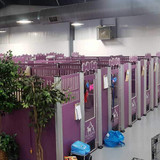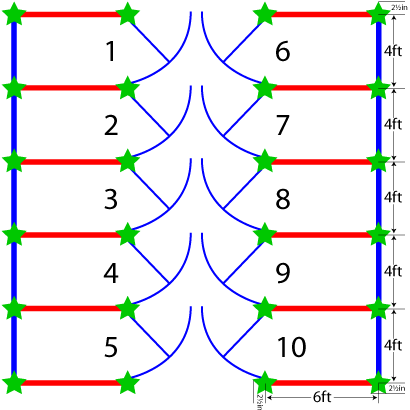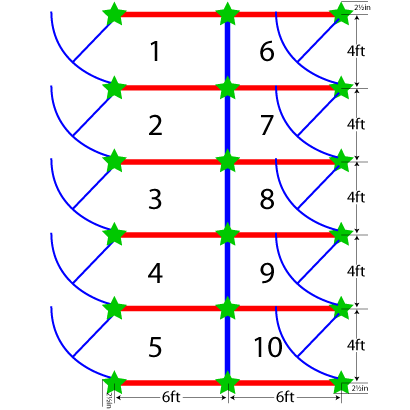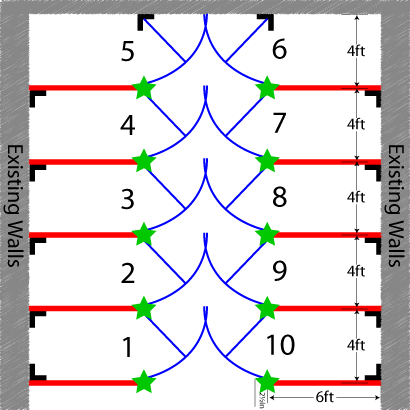Starting Your Own Dog Daycare or Boarding - Kennel layout

This is part of a series of blog posts about starting your own dog daycare or boarding business.
Click here for the entire series
I get asked all the time what the best kennel layout is... I haven't found a perfect layout - but there are some things to keep in mind:
First consider the Kennel Use:
First, we look at the use of the kennels. Are you boarding dogs? Will it be long-term? Do you plan on letting the dogs out to a play-area often? Where is that play-area in relation to the kennels? In my experience, the closer you can keep the kennels to the play and/or potty area is ideal. That said, it is not 'wrong' to have a hallway to funnel the dogs from the kennels to the play area - it just takes more time and there might be more distractions for the dog to notice along the way.

The use of the kennels leads us into kennel size. The longer the dogs are in the kennels, the larger the kennels should be. Another thing to keep in mind when considering size is the efficient use of materials and shipping. Most materials come in 4ft or 6ft increments. For example, Plywood and Drywall (typical materials used to build the building) come in 4ft x 8ft sheets. Additionally, the trucks we use to haul these materials around the country are designed around hauling these same materials. For that reason, a typical semi-trailer is 8ft wide on the inside. This allows us to have two pallets of materials that measure 4ft side-by-side in the truck. If we ship something that is 5ft wide for example, we end up paying for the 8ft space - even though 3ft is not used. That makes shipping 5ft wide kennels more costly.
Next, check out the available space:
Next, I like to ask about the available space you have to put the kennels. It doesn't make much sense to try to squeeze in a specific kennel layout into a space that it will not fit! Even if you have the luxury of designing your own building from scratch, there are usually some parameters that we must discuss before we get too detailed with the exact layout.
Start out by measuring the available space (wall to wall). This provides us the overall parameters to work with.

We also need to know if there are any obstacles we need to work around. For example, is there an electric panel on the wall? Where is the light switch in the room? Another thing to keep in mind is the direction that doors into/out of the room swing. Sometimes these doors run into the kennels if they are placed too close!
Once a size is determined, we can finally work up some layouts! Many times we try to make all of the kennels the same size (for uniformity within the facility) - but they do not have to be. For example, your space might be 23ft wide and you want to maximize the number of kennels within that space. We can build five 4ft kennels and one 3ft kennel to fill it perfectly!
Let's talk about the layouts:
I used 10 kennels in each scenario so you can get an idea of the overall structure. There are some pros and cons to each type of layout:
Again, these aren't the only layouts that you can use - but they are the most common that we see. Ultimately, you need to determine the best layout for your situation.
Keep in mind these criteria:
- Ease of cleaning - can you get the washing equipment to/from the kennels?
- Ease of getting the dogs in/out of the kennel - After all, if you can't get the dogs in, what good are the kennels?
- Ease of feeding the dogs - are the kennels too far from the food storage?
- Noise - Are the kennels right next to the lobby or phone?
- Play-yard/Potty Access - can you get the dogs to this area quickly?
There isn't a 'perfect' layout for a dog kennel facility - but hopefully some of these ideas will give you some guidance to the layout that fits your situation best.



